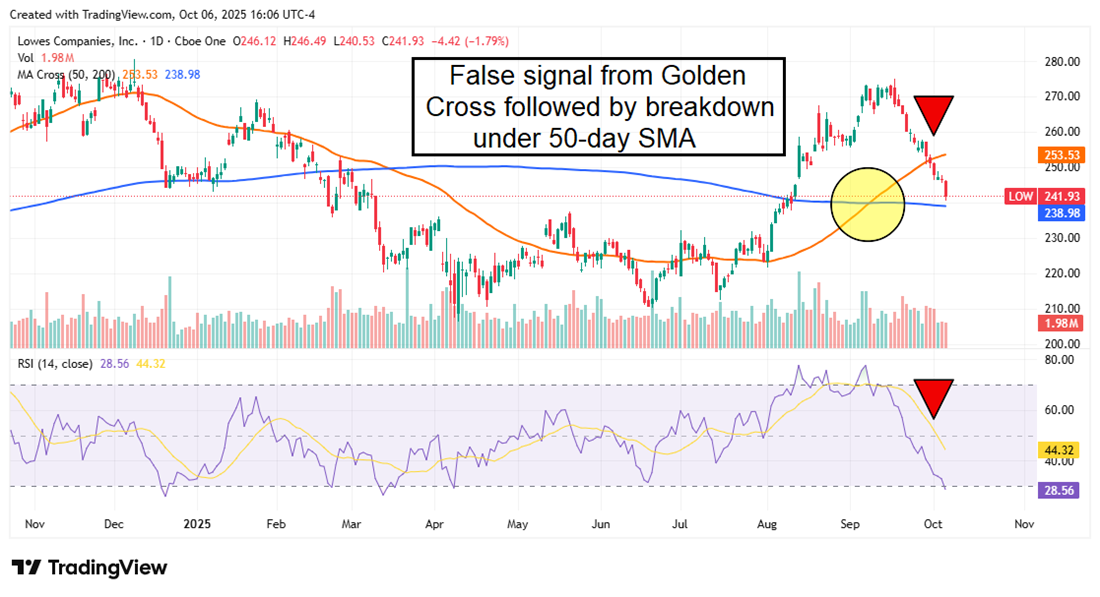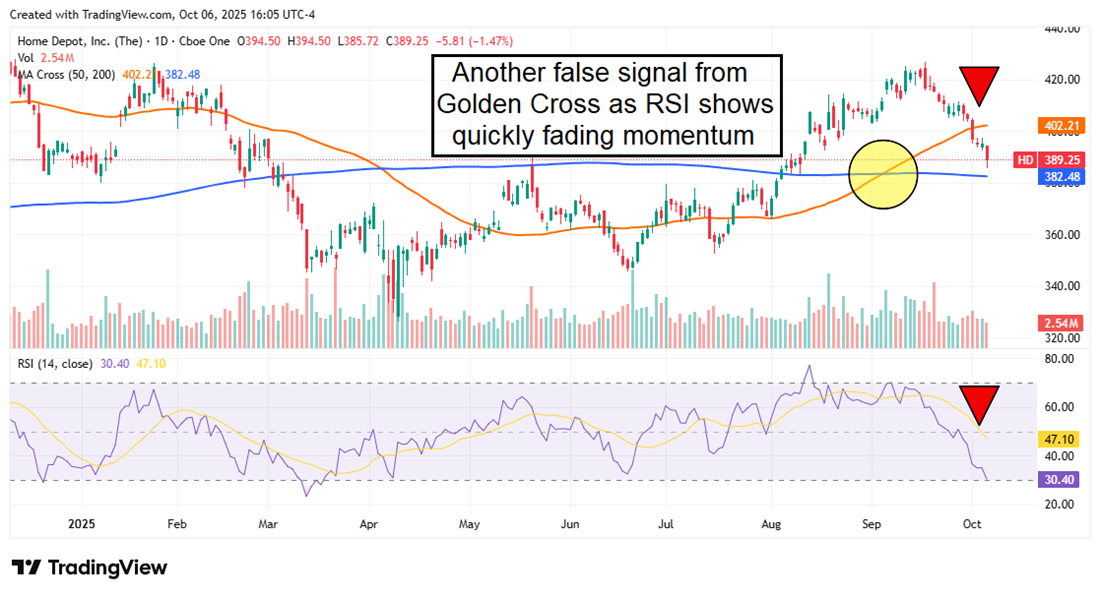Lowe’s vs. Home Depot: Which Benefits More From Lower Rates?
 As markets continue their AI-fueled march to new highs, it’s easy to ignore some of the stocks getting left behind in the rush.
As markets continue their AI-fueled march to new highs, it’s easy to ignore some of the stocks getting left behind in the rush.
When large-cap stocks like Advanced Micro Devices Inc. (NASDAQ: AMD) are soaring 25% and adding $80 billion to their market cap in a single session, who has time to concentrate on the laggards?
But one area of the market that has lagged could soon get a boost from the Fed’s interest rate easing policy: home improvement.
Home Depot Inc. (NYSE: HD) and Lowe’s Companies, Inc. (NYSE: LOW) have significantly underperformed the S&P 500 this year. Could lower interest rates finally spur these two stocks into action?
2025’s Cold Housing Market Has Dragged Home Depot and Lowe's
The S&P 500 has returned over 13% year-to-date (YTD), but HD and LOW shares have traded with red numbers next to their tickers for most of 2025. While both companies have produced solid earnings (and actually grew comparable sales in Q2), the stocks have lagged, primarily due to high interest rates and a slowdown in home sales.
The retail sector has always been a cyclical industry, but this factor is particularly pronounced in home improvement stores, since renovations often require customers to tap into their home equity or utilize home equity lines of credit (HELOCs).
The high-interest-rate environment hasn’t just stymied home sales, it has also silenced the home renovation and construction industries. Professional builders are paying higher rates for loans, and homeowners are postponing projects until they can secure more favorable terms on their equity. Couple this environment with rising prices on materials like lumber and steel due to tariffs, and you’ve got a recipe for a frozen housing market.
Home Depot held its conference call for fiscal Q2 2026 earnings before the market opened on August 19, reporting results slightly below expectations despite comp sales growing 1% year-over-year (YOY).
The company cited soft demand for big-ticket projects as a reason for the miss.
Lowe’s reported more of the same during its fiscal Q2 2026 release pre-market on August 20, anticipating a flat market due to a healthy but cautious consumer base.
Lowe’s DIY Customer Base Makes It More Sensitive to Rate Changes
One of the key differences between the two companies is where the bulk of their sales emanates from.
Home Depot has taken strategic initiatives to improve its supply line for professional contractors and builders, with the Pro segment now accounting for more than 50% of total revenue, according to Stansberry Research.
The company acquired SRS Distribution in 2024 and GMS in 2025 to boost the availability of heavy-duty materials and products in its Pro ecosystem. Since contracted construction jobs aren’t as price sensitive as Do-It-Yourself home remodeling, the expansive Pro segment gives Home Depot some protection from interest rate sensitivity.
Additionally, Home Depot generates just under $160 billion in annual sales, which nearly doubles the $83 billion figure from Lowe’s.
On the other hand, Lowe’s focuses on the DIY home renovation market, with approximately 70% of its revenue derived from discretionary spending rather than contracted jobs. This market is far more susceptible to interest rates and economic sentiment, which could explain why LOW shares are down 10% over the last 12 months compared to just 5% for HD.
Last year, Lowe’s announced a Total Home Strategy to improve its Pro market share and accelerate online sales. The company is implementing an AI framework to assist with recommendations and a product marketplace to bring in new sellers and expand its product catalog.
Despite its recent Pro expansion, Lowe’s remains at a capital disadvantage to Home Depot and is more dependent on cyclical business trends. These variances are likely why HD trades at a higher multiple to LOW, but they also present an opportunity for the smaller firm.
If interest rates decline rapidly, Lowe’s could experience elevated sales growth due to the unlocking of ‘trapped’ equity and home sales. Home Depot’s sales growth is more stable, but Lowe’s may offer more upside potential if mortgage rates decline faster than anticipated.
Volatile Charts Suggest Caution in the Short Term
Investors with a higher risk tolerance may prefer the upside of Lowe’s to the stability of Home Depot.
However, their stocks still face an uphill battle in 2025. Hopes of a 50-basis-point rate cut provided a minor rally for both stocks in late summer, even leading to the formation of a bullish Golden Cross.

However, this proved to be a false signal, as both stocks immediately reversed course following the Fed’s announcement of a 25-basis-point cut. LOW and HD share prices both plunged below the 50-day SMAs and are now approaching a crucial level above the 200-day SMA.
 Regardless of which stock you prefer, the shrewdest move might be to remain in ‘wait and see’ mode. Looser monetary policy will take some time to filter into the broader economy, even if the Fed follows a faster pace of cuts.
Regardless of which stock you prefer, the shrewdest move might be to remain in ‘wait and see’ mode. Looser monetary policy will take some time to filter into the broader economy, even if the Fed follows a faster pace of cuts.
Keep an eye on HD and LOW shares as they approach the 200-day SMA and Oversold status on the Relative Strength Index (RSI). These will be the key short-term metrics to watch before mortgage rates start coming down.
Learn more about LOW


